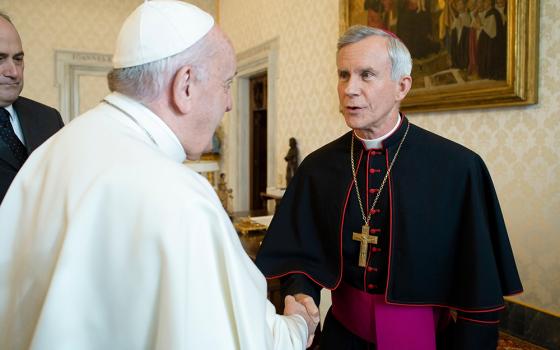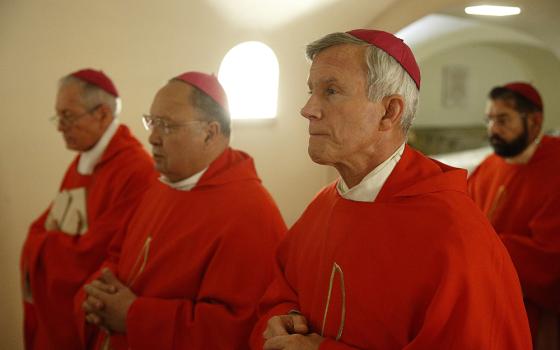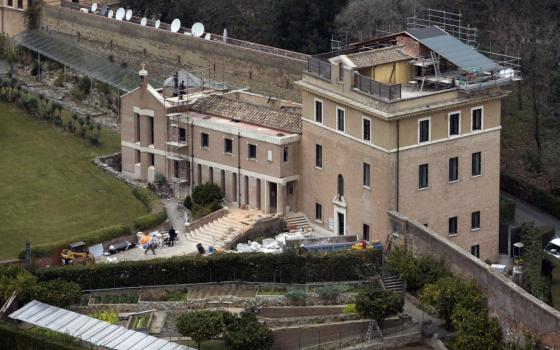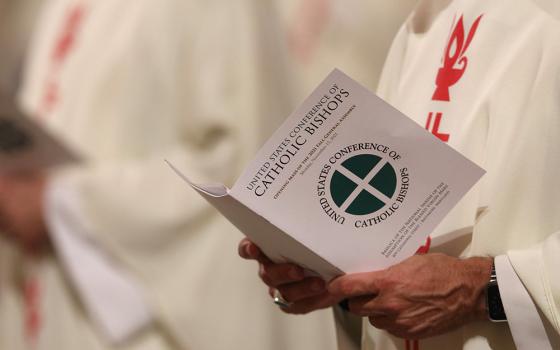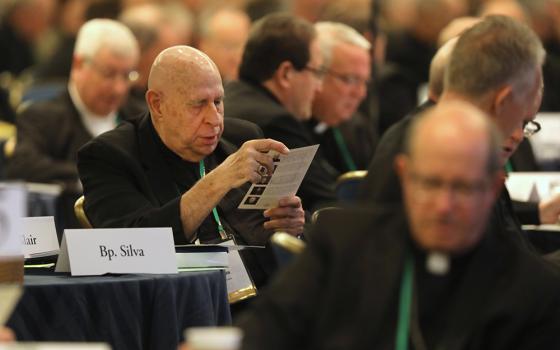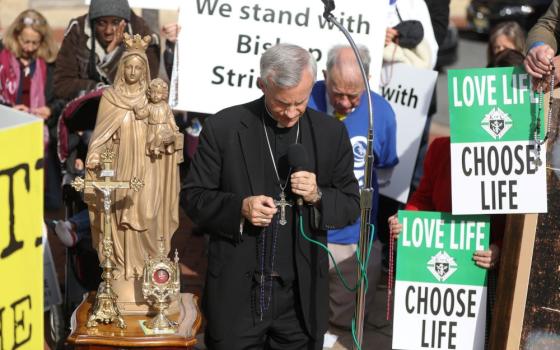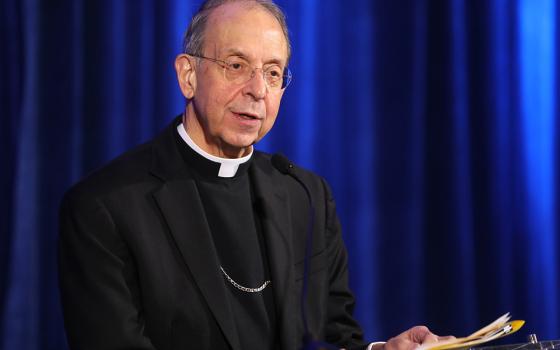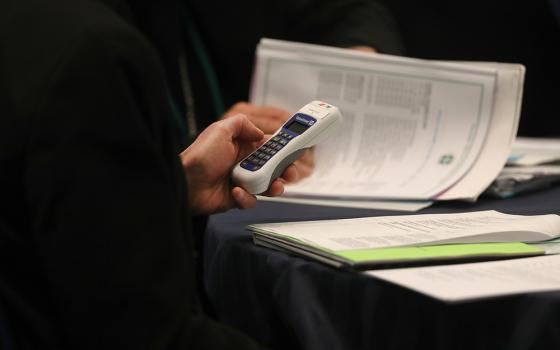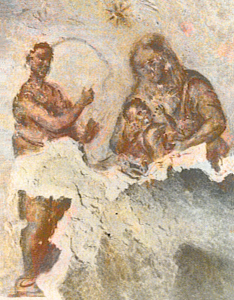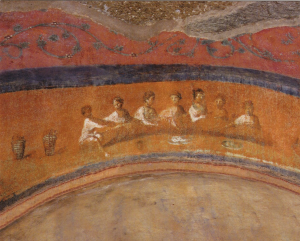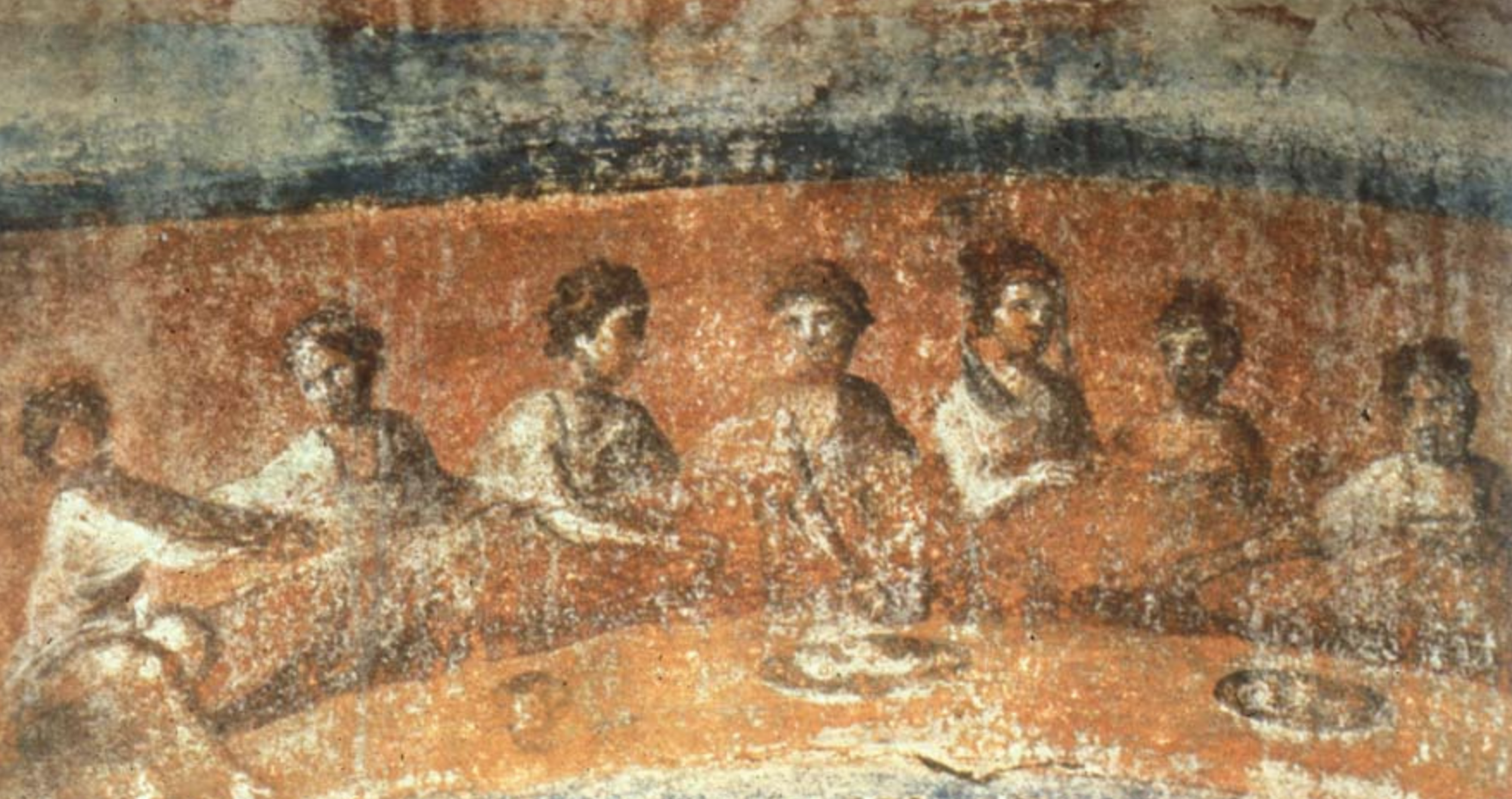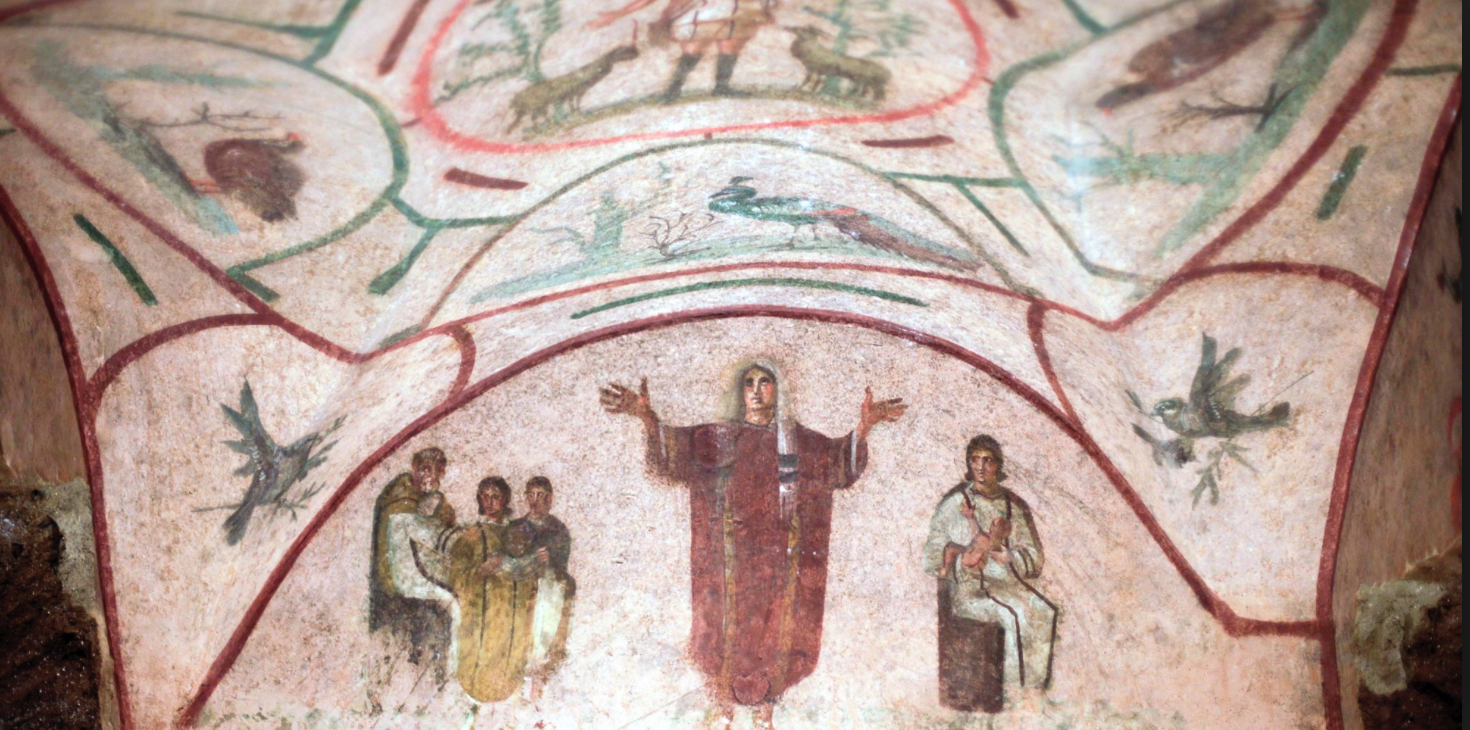Videos on Ministry of ARCWP in Spanish from Maria Hildalgo ARCWP
This year's meeting of the United States Conference of Catholic Bishops was like no other. There was very little in the body's deliberations that was newsworthy. Taken as a whole, the meeting demonstrated the sclerotic condition the U.S. hierarchy has created for itself.
How bad is it?
It's not every day that a former general meddles in the internal politics of the Catholic Church. But if you needed any further confirmation that there is a group within the church that is completely unhinged, all the evidence needed came in a tweet this week from Michael Flynn, Donald Trump's short-lived national security adviser and long-term conspiracy theorist, telling disgraced former nuncio Archbishop Carlo Maria Viganò and deposed Bishop Joseph Strickland to "STAND YOUR GROUND!!!"
MAGA world wasn't content to storm the U.S. Capitol. It has broken into the realm of the sacred and defiled the temple. Those of us who subscribe to James Joyce's "Here comes everybody" ecclesiology understand that the Catholic Church will include a range of cultural dispositions, social classes, intellectual and moral attitudes. But it is appalling that the brutish and unhinged quality of the MAGA-sphere has become pronounced in a church that calls itself "one, holy, catholic and apostolic." Whatever the MAGA-sphere is, it is not one or holy or catholic or apostolic. The rants of Flynn and his ilk are not notes of the church.
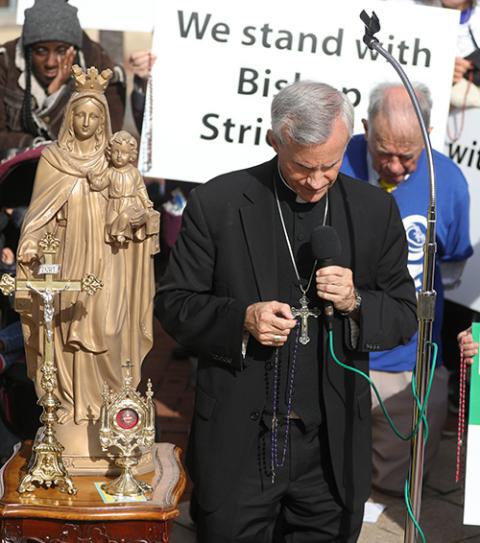
Bishop Joseph Strickland leads the recitation of the rosary Nov. 15 outside the site of the fall general assembly of the U.S. Conference of Catholic Bishops in Baltimore. (OSV News/Bob Roller)
I saw Strickland at the local pub Sunday night. I have seen him each day in the lobby of the hotel where he is staying. He was seen outside praying the rosary with a few followers on Tuesday.
What I have not seen? Strickland speaking with a brother bishop. He has isolated himself from the body of bishops. He is the walking antithesis of episcopal collegiality. He has exiled himself and has no one to blame but himself for his isolation.
Isolation is the opposite of communion. The horror of death is the fear of absolute loneliness, of the loss of engagement. Put a snake into a tomb, and the dead do not flee. When Jesus rose from the dead, he spoke to those he encountered, he walked with the disciples headed to Emmaus, he ate a piece of fish, broke bread, he engaged. He promised that even though we must all die alone, we do not die into loneliness.
There was Strickland, all alone.
The bishops talked about their eucharistic revival. The nuncio, Cardinal Christophe Pierre, even linked that revival with the ongoing embrace of synodality within the life of the church.
"What Jesus does with the disciples on the way to Emmaus is precisely the synodal path in its essential elements: encountering, accompanying, listening, discerning, and rejoicing at what the Holy Spirit reveals," the cardinal told the bishops in his address. "As a result of this process, the disciples' minds were enlightened, their hearts were set on fire, and then, through the breaking of the bread they were able to see what they had missed: Jesus was alive and he was with them!"
ADVERTISEMENT
Too many of those who were listening did not have ears to hear. It is the principal characteristic of our time and place that we crave certainty. Both left and right cling to their orthodoxies, which have little to do with what Catholics mean by "orthodox."
Our faith, our orthodox faith, demands that we engage this messy world, confident in the mission of proclaiming the faith: "Jesus is alive and is with us." The nuncio quoted from St. John of the Cross:
To come to the knowledge you have not you must go by a way in which you know not. To come to the possession you have not you must go by a way in which you possess not. To come to be what you are not you must go by a way in which you are not.
Only those who think they have nothing to learn from God, that they already possess the truth as if it were a private possession, who have no more to learn from life, only such persons could be unmoved by the nuncio's words. How many bishops were unmoved?
There is another word for those with nothing to learn, nothing to become. Dead.
The U.S. bishops' conference is not dead but it seems lifeless. The eucharistic revival is discussed as if the Eucharist was a noun, not a verb.
When Bishop Daniel Flores of Brownsville, Texas, delivered his report on the recently concluded synod in Rome, there was not a single question from the bishops.
The bishops, without debate, adopted a new introductory letter to "Faithful Citizenship," adding to the list of documents no one will read. The bishops did vote overwhelmingly to approve a new rite for the consecration of virgins.
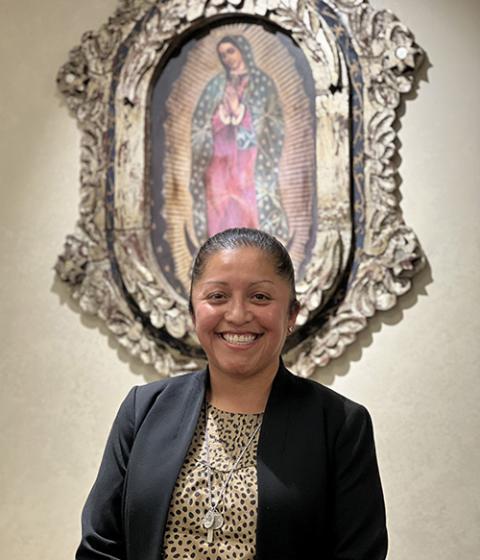
Ivonn Rivera, winner of the Cardinal Bernardin New Leadership 2023 Award from the Catholic Campaign for Human Development (OSV News/Courtesy of Fr. Angelbert Chikere, Diocese of San Jose)
There is a glimmer of difference between being dead and being lifeless. That glimmer was provided by Ivonn Rivera, a community leader in the Diocese of San Jose, California. Rivera received the Cardinal Bernardin New Leadership award from the Catholic Campaign for Human Development.
She spoke movingly about her work as a community organizer, lobbying municipal authorities to install crosswalks and stop signs in a poor neighborhood, so that children would not be struck by cars as they walk to school. Rivera also helped start Misas del barrio to bring the Eucharist to those afflicted by all the pathologies of urban poverty. She teared up when she introduced her daughter.
In Rivera's work, the Gospel is evangelizing, pursuing justice, alive. The ceremony honoring Rivera and her work was a ray of hope.
There was a time when U.S. bishops' conference meetings were consequential, when the bishops as a body were engaging the society and the culture. There may yet be such a time again. That time is not yet in prospect. In this thrilling papacy of Pope Francis, the absence of such engagement is astonishing, and not in a good way.


